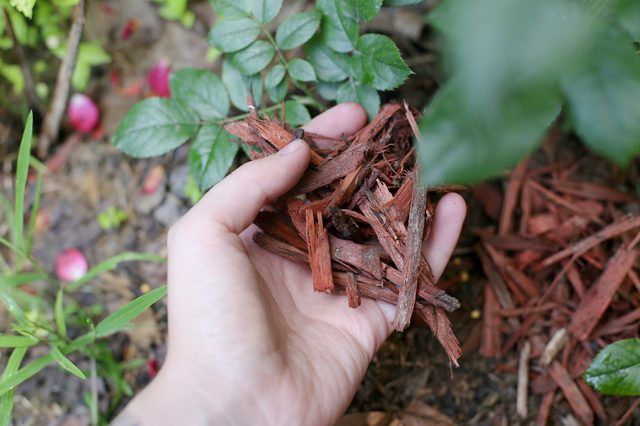Bulbs
Flower Basics
Flower Beds & Specialty Gardens
Flower Garden
Garden Furniture
Garden Gnomes
Garden Seeds
Garden Sheds
Garden Statues
Garden Tools & Supplies
Gardening Basics
Green & Organic
Groundcovers & Vines
Growing Annuals
Growing Basil
Growing Beans
Growing Berries
Growing Blueberries
Growing Cactus
Growing Corn
Growing Cotton
Growing Edibles
Growing Flowers
Growing Garlic
Growing Grapes
Growing Grass
Growing Herbs
Growing Jasmine
Growing Mint
Growing Mushrooms
Orchids
Growing Peanuts
Growing Perennials
Growing Plants
Growing Rosemary
Growing Roses
Growing Strawberries
Growing Sunflowers
Growing Thyme
Growing Tomatoes
Growing Tulips
Growing Vegetables
Herb Basics
Herb Garden
Indoor Growing
Landscaping Basics
Landscaping Patios
Landscaping Plants
Landscaping Shrubs
Landscaping Trees
Landscaping Walks & Pathways
Lawn Basics
Lawn Maintenance
Lawn Mowers
Lawn Ornaments
Lawn Planting
Lawn Tools
Outdoor Growing
Overall Landscape Planning
Pests, Weeds & Problems
Plant Basics
Rock Garden
Rose Garden
Shrubs
Soil
Specialty Gardens
Trees
Vegetable Garden
Yard Maintenance
How to Care for Knock Out Roses
How to Care for Knock Out Roses. Given ideal planting locations of full sun and well-drained soil, Knock Out roses (Rosa spp.) offer near-continuous blooms in exchange for minimal maintenance. From the original Knock Out rose (Rosa "Radrazz") to later varieties in the Knock Out group, simple, basic care keeps these roses looking their...
Given ideal planting locations of full sun and well-drained soil, Knock Out roses (Rosa spp.) offer near-continuous blooms in exchange for minimal maintenance. From the original Knock Out rose (Rosa "Radrazz") to later varieties in the Knock Out group, simple, basic care keeps these roses looking their best.
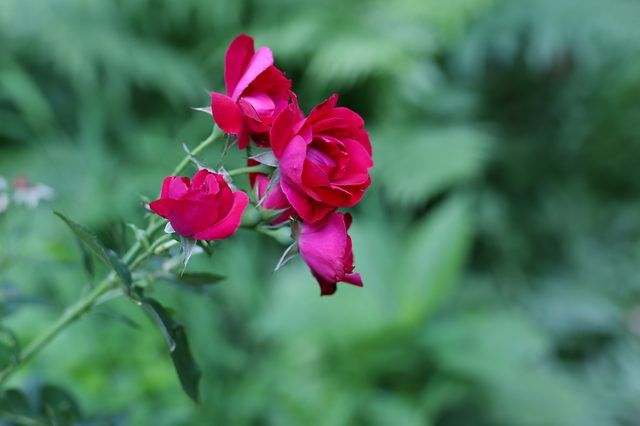
During their first year in the ground, Knock Out roses need regular water as roots become established. One inch of water per week from rainfall or supplemental watering sets a starting point, but a hands-on approach keeps watering on track. Test the soil about 3 inches down from the surface; it should be cool and damp. For established bushes, let the soil dry at that depth before you water. Knock Out leaves also give clear tips on when these drought-tolerant shrubs need a drink. Normally glossy, thirsty leaves lose their luster. Infrequent, thorough waterings suit these roses. A 2- to 3-inch layer of organic mulch helps keep roots cool and retains soil moisture.
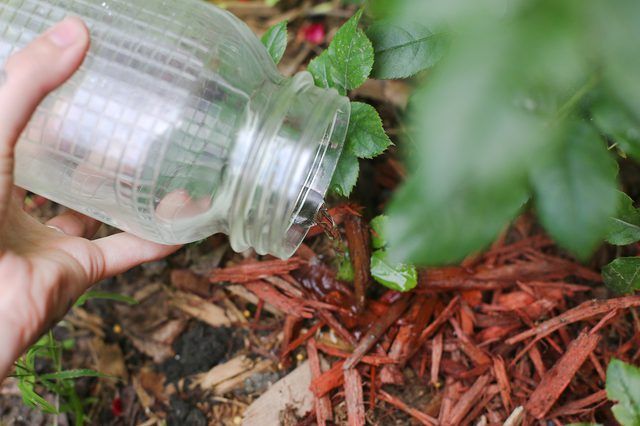
Fertilizers are optional when it comes to Knock Out roses. Proper planting avoids added fertilizer in the hole, and normal garden soil meets their needs in future years. A 2- to 3-inch layer of organic compost added each spring provides gentle, long-lasting nutrition. If desired, a slow-release rose fertilizer can be used. For example, apply 3/4 cup of a granular, 3-4-3 rose fertilizer per Knock Out rose every six weeks during the active growing season. Gently work the fertilizer into the soil around the shrub's base, and water the area well. Avoid fast-release, high-nitrogen fertilizers; they spur lanky growth and reduce blooms. Stop fertilizing two months before your area's first frost so the roses prepare for winter.
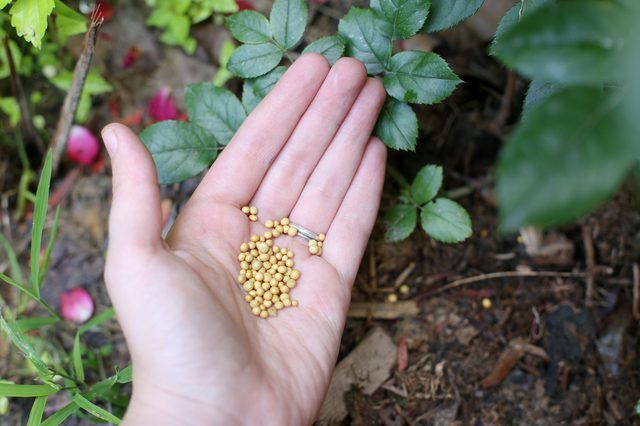
Known as self-cleaning roses, Knock Outs drop old blossoms on their own after blooming, eliminating the need for deadheading and preparing the way for the next flush of flowers. Knock Outs grow 3 to 4 feet tall and wide in most climates, tripling in height after an annual pruning. The roses aren't fussy about techniques. Cut them back to 12 inches in height or one-third of your desired size, just as new growth begins. Use sharp, bypass pruners or bypass loppers -- even hedging shears work with these roses. Sterilize your pruner blades with household disinfectant before and after each bush, and wear protective clothing, including gloves, long sleeves and safety eyewear.
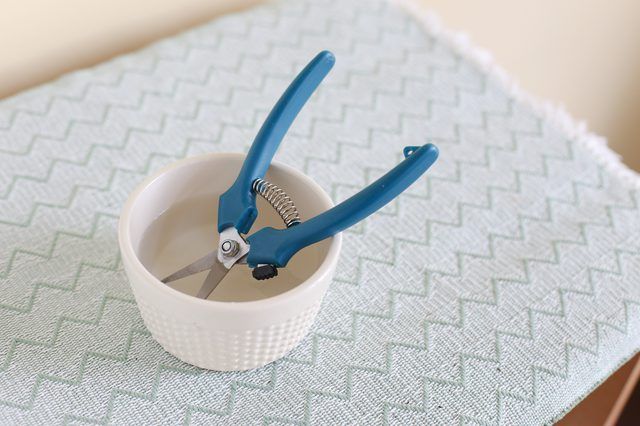
Diseases and insects rarely trouble Knock Out roses. The shrubs resist common rose diseases, including black spot and mildew, and eliminate the need for disease control beyond proper siting and care. Common garden pests, such as aphids and spider mites, occasionally may appear. A strong burst of water from your garden hose dislodges these pests and sends them on their way. Aphids generally cluster on stems below the blossoms, while spider mites stay hidden on the undersides of leaves. Target your spray where the intruders lie, and that's all the pest control Knock Outs generally need.
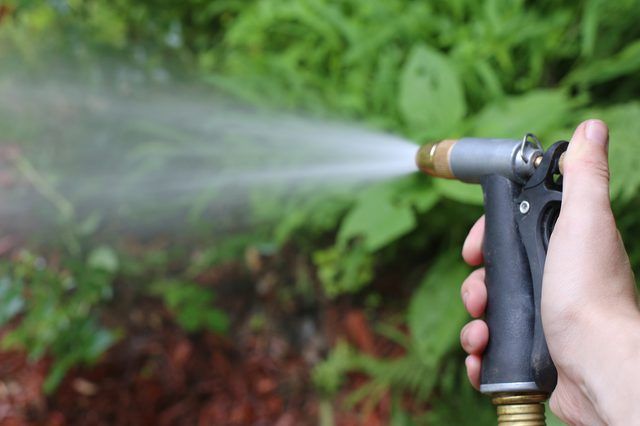
Knock Out roses are reliably hardy in U.S. Department of Agriculture plant hardiness zones 5 through 11, with Sunny Knock Out (Rosa "Radsunny") hardy in USDA zone 4 as well. For gardeners pushing the envelope in cold climates with the Knock Out group, extra winter insulation helps protect the roses' crowns from winter damage. After the ground has frozen and the shrubs are dormant, mound mulch or oak leaves over their crowns to a depth of about 8 inches. Remove the mulch as soil warms in spring. Knock Out roses are grown on their own roots, so even when they die back to the ground in harsh winters, they spring back from the roots in their hardiness zones.
